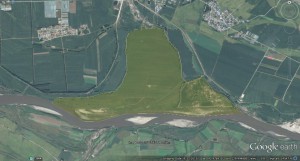Institute for Far Eastern Studies (IFES)
2015-4-30
North Korea is expediting the development of various ‘Special Tourist Zones’. North Korea is diversifying its tour packages, and have designated Mt. Kumgang (Kumgangsan) and Mt. Paektu (Paektusan) as International Special Tourist Zones. A Special Tourist Zone on the riverside near the Amrok (Yalu) River Bridge is also under construction. This zone is designed to attract foreign tourists including Chinese tourists.
In addition, North Korea and China are pushing forward with the ‘Onsong-Tumen Border Culture and Tourism Cooperation Zone.’ This is intended to be a cooperation zone that integrates tourism, cultural performances, duty-free shopping and serves as a distribution center of tourism products for both countries.
North Korea has also revealed outlines of its plans for the Wonsan-Mt. Kumgang Tourist Region and is pushing ahead with an on-site briefing session scheduled for May 2015. While North Korea repairs and expands the existing road network connecting each tourist site (focusing first on Wonsan), authorities have decided to construct a transportation network by establishing a high-speed railroad between Pyongyang and Wonsan, as well as opening passenger routes between Wonsan Harbor and Rason, and Wonsan Harbor and Vladivostok. They also plan to introduce a series of measures for attracting tourists, including a no-visa system, currently under consideration.
In addition, the Korean Central News Agency (KCNA) has announced an era of full-fledged international tourism in Mt. Paektu. On April 23, 2015, KCNA revealed that the Mubong International Special Tourist Zone will be built in part of Samjiyon County’s Mubong Workers’ District near Mt. Paektu. The Mubong Workers’ District is 35km away from Mt. Paektu, 60km away from Samjiyon, and 70km away from Taehongdan. Thus, it is considered eligible for designation as a special district.
This location is considered to be relatively well-equipped with tourism infrastructure compared to other regions, and expected to perform favorably in attracting outside investment. KCNA reported that this region has a number of amenities and attractions as a Special Tourist Zone.
For example, two decades ago North Korea prepared to host the 1995 Asian Winter Games in Samjiyon until those preparations came to a halt. However, construction resumed in the 2000s, and since then North Korea has constructed a large-scale winter athlete’s village equipped with facilities such as a ski resort and ice rink. Also, Mubong lies in the middle of Samjiyon, Mt. Paektu, and Taehongdan. From Mubong one can go climb Mt. Paektu and view the entire Samjiyon area, or go to Taehongdan and see the large potato-growing districts.
Since the Kim Jong Il era, potato fields were planted in Taehongdan as a tourist attraction. In Mubong, North Korea built large-scale blueberry production complexes, which have become well-known for their blueberry wine. There are also customs offices in Ssangdubong, making the entry process for foreigners presumably less difficult.

